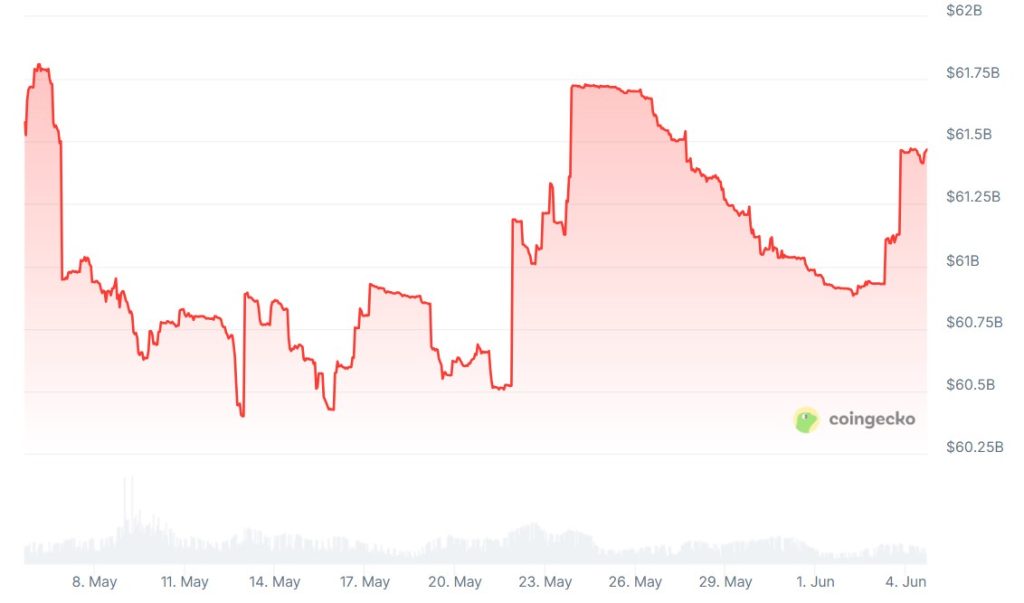Russia’s Central Bank Flirts with Crypto: Corporate Stablecoin Purchases on the Table
In a move that’ll make traditional bankers clutch their rubles, Russia’s Central Bank is reportedly warming to the idea of letting corporations dabble in foreign stablecoins. Because nothing says 'financial sovereignty' like outsourcing trust to offshore dollar-pegged tokens.
The proposal—still in early stages—signals a stark pivot for an institution that once treated crypto like radioactive contraband. Now, faced with sanctions and a shrinking toolkit for cross-border trade, they’re eyeing stablecoins as a lifeline. Talk about a geopolitical plot twist.
Critics are already sharpening their knives: 'This isn’t innovation—it’s desperation wrapped in blockchain buzzwords,' quipped one Moscow-based financier (between sips of $200 whisky, naturally). Meanwhile, crypto advocates see cracks in the anti-crypto dam—and a potential backdoor for broader adoption.
One thing’s certain: when central banks start playing with private stablecoins, the rules of the game change overnight. Whether this ends in liberation or a spectacular faceplant remains to be seen.
Russian Stablecoins Plan
According to the draft proposal, the bank wants to let Russian legal entities that do not meet the criteria of “qualified investors” to acquire “foreign digital rights.” The bank said that trading in these assets should be allowed “without any restrictions.”

RBC wrote: “Some cryptocurrencies, in particular stablecoins, may fall under the bank’s definition” of foreign digital rights.
However, the same media outlet pointed out that the rule change WOULD likely not open the door for Russian firms who wish to trade coins like USDT and USDC.
In mid-May, the bank updated its requirements for overseas assets allowed to circulate on the Russian market.
The new requirements expressly outlaw assets that are underpinned by “securities issued by unfriendly issuers.”
They do, however, make an exception for firms who use USDT and USDC as a payment tool in in cross-border trade deals.
US Treasury Bill Reserves: A Problem for Russia?
Tether’s reserves are reportedly mainly comprised of cash, cash equivalents, short-term deposits, and US Treasury bills.
Circle, the USDC operator, also holds much of its reserves in the FORM of short-dated treasuries held in regulated, sanctions-compliant domestic banks.
However, the proposed rule change would open the door for Russian firms to do stablecoin-powered business with BRICS nations and other Moscow allies.
Following the most recent BRICS Summit, held in Kazan, Russia, in October 2024, a number of tech players in India and elsewhere announced stablecoin plans for the bloc.
BRICS players have also floated the idea of creating a gold-backed stablecoin that would do away with the need for dollar-denominated trade.
Beijing and Hong Kong have also talked up the idea of adopting stablecoins that do not make use of USD-related assets.
Ukraine says it attacked the Crimean Bridge with explosives as Russia closes traffic on the route linking the annexed Black Sea peninsula with the Russian mainland https://t.co/RK1GJ4Y34b
— Bloomberg (@business) June 3, 2025Moscow, meanwhile, has been exploring its own stablecoin options, as well as digitized securities.
DFAs Rule Change Imminent
The size of Russia’s digital financial assets (DFAs) market is also continuing to increase. The bank’s latest plans also propose lowering the threshold for market entry.
At present, qualified investors can only spend a maximum of 600,000 rubles ($7,570) per year on DFAs. But the bank wants to almost double this limit.
Foreign exposure to US assets may be lower than feared – column by @ReutersJamie https://t.co/4N528c8O5K pic.twitter.com/2YBnZoQf8W
— Reuters Energy and Commodities (@ReutersCommods) June 3, 2025The bank proposes allowing citizens to buy a maximum of 1 million rubles ($12,618) worth of DFAs per year.
The document stipulates that all Russian legal entities will be able to acquire DFAs without any restrictions, regardless of whether or not they have qualified investor status.
The bank noted that this will allow firms to use DFAs more actively. The regulator suggested this MOVE could help firms solve commercial issues.
If the proposal does not receive major objections, the bank could turn its proposal into binding guidelines for the domestic banking sector.
These could come into force before the end of the month, the Central Bank explained.

